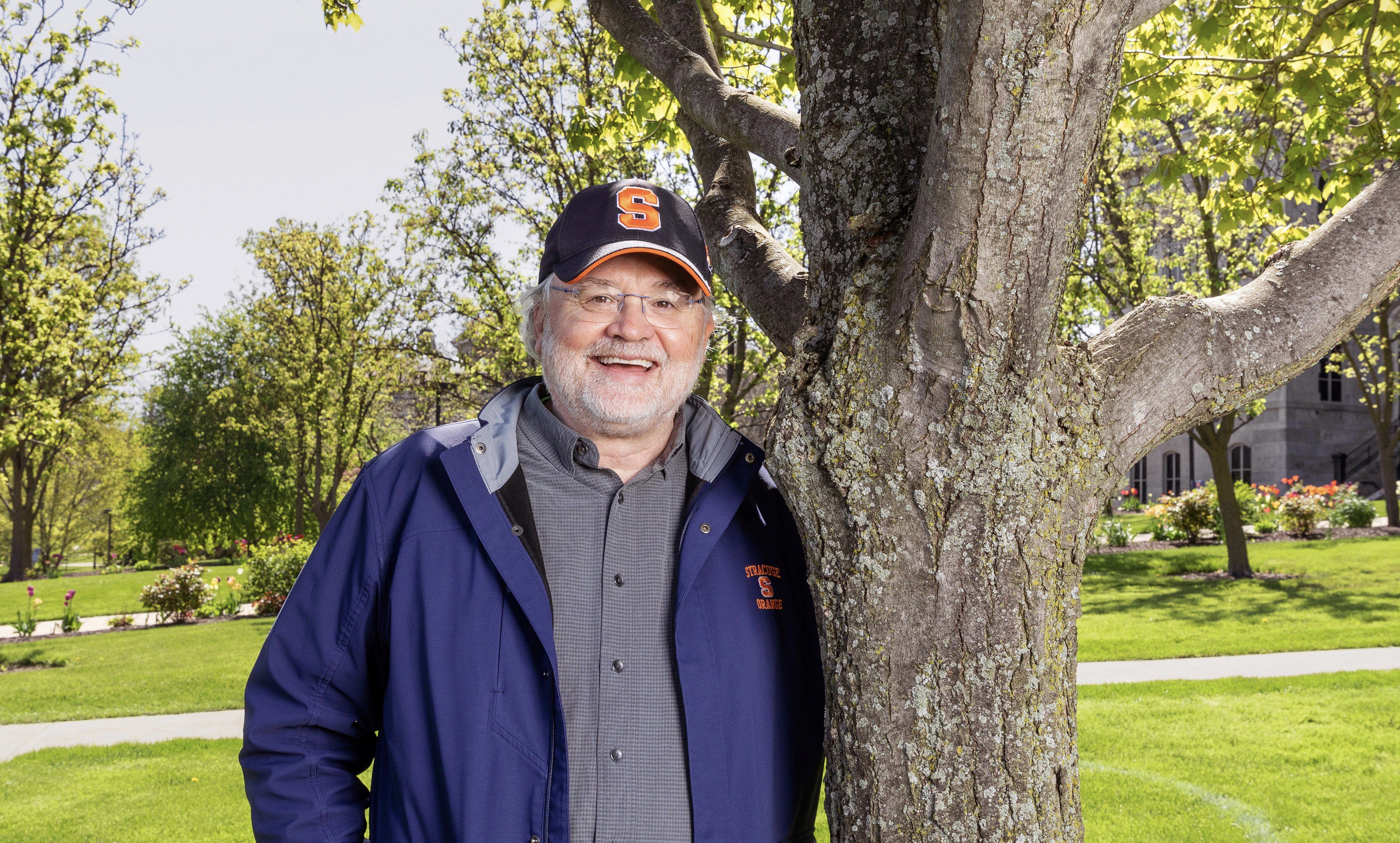Examining the History and Consequences of the Doctrine of Christian Discovery
Professor Philip Arnold is principal investigator on a Luce Foundation grant awarded to Syracuse University to explore the impact of the Doctrine.

For over 30 years Syracuse University Professor Philip Arnold has been teaching in the area of religion and colonialism. As president of the Indigenous Values Initiative (IVI) and founding director of the Skä·noñh—Great Law of Peace Center, he has collaborated with the Onondaga Nation and scholars from Central New York-area institutions to advance scholarship surrounding decolonization. His research has led him to explore a famous U.S. Supreme Court case that would ultimately shape the future of international property law. In that 1823 case, known as Johnson v. M’Intosh, the Supreme Court ruled that a land sale in 1763 by the Piankeshaw Indian nation to British citizens was not valid because the Piankeshaw nation did not have the right to convey the land, citing the Doctrine of Christian Discovery (DoCD).
As the 200-year anniversary of the Johnson v. M’Intosh case approaches, Arnold will serve as principal investigator on a grant awarded to Syracuse University by the Henry Luce Foundation to examine and challenge the theology and legal theory of the DoCD. According to Arnold, the project, titled “200 Years of Johnson v. M’Intosh (JvM): Indigenous Responses to the Religious Foundations of Racism,” will explore how the DoCD and related narratives including the Columbus story and Manifest Destiny (policy of U.S. expansion across North America coined in the mid-1800s) established codes of domination that continue to impact Indigenous Peoples in America and around the world today.
The DoCD was a framework issued by the Vatican in the mid-fifteenth century which established a justification for seizure of lands not inhabited by Christians. According to the website DoctrineofDiscovery.org, it was formulated as a series of papal bulls and sanctioned the conquest and colonization of non-Christians who were deemed “enemies of Christ” in Africa and the Americas. (1)
“The global scale with which the DoCD expressed itself in the ‘Age of Discovery’ — first in Africa, then the Americas, and beyond — created a unified Christendom, which became the basis of the transatlantic slave trade, land theft and the opposing force against the great global plurality of cultures,” says Arnold, associate professor and chair of the Department of Religion and core faculty member of Native American and Indigenous Studies in the College of Arts and Sciences. “The doctrine continues to be used by multi-national corporations and nation-states in their extraction of resources in indigenous territories around the world. These religious ideas became the foundational building blocks of white supremacy and Manifest Destiny that we are dealing with today.”
While over 350 Christian denominations and other religious groups have taken a first step to denounce and repudiate the Doctrine of Christian Discovery, Arnold says the DoCD continues to influence land appropriation today and has been cited in court cases as recently as 2005’s City of Sherrill v. Oneida Indian Nation of N.Y. In that case, the U.S. Supreme Court held that the Oneida Indian Nation could not restore tribal sovereignty to land that had been taken by New York State, says Arnold. In that decision, the Court drew upon the DoCD when delivering its opinion, and said that the Oneidas had “relinquished governmental reins and could not regain them through open-market purchases from current titleholders." (2)
“Commodification of land, understood by the Indigenous Peoples of the Americas as Mother Earth, is seen as the root cause of disrupting the natural world,” says Arnold. “This 200th year anniversary of Johnson v. M’Intosh is an opportunity to examine this clash of values as related to land.”
The Luce grant will support conferences planned and led by Indigenous scholars, activists and students; podcasts that will amplify Indigenous voices; art exhibits featuring the work of Indigenous artists; and journalistic writings illuminating Indigenous values. Arnold and his colleagues plan to hold a major event at Syracuse University in April 2022 featuring An Evening with Buffy Sainte-Marie, Indigenous Canadian-American musician and social activist. Additionally, the group is organizing a conference to take place at Syracuse University in February 2023, the month that marks the 200th anniversary of Johnson v. M’Intosh.
An art show themed around the DoCD featuring work by Indigenous artists will be held at the Skä·noñh—Great Law of Peace Center in 2023-24. Arnold and his collaborators will also produce a special issue of the journal CrossCurrents for religious groups, schools and Indigenous communities, and a book for the series Haudenosaunee and Indigenous Worlds, published by the Syracuse University Press. Together these materials serve to educate the public about the history and consequences of the DoCD.
The Henry Luce Foundation seeks to enrich public discourse by promoting innovative scholarship, cultivating new leaders, and fostering international understanding. Established in 1936 by Henry R. Luce, the co-founder and editor-in-chief of Time, Inc., the Luce Foundation advances its mission through grantmaking and leadership programs in the fields of Asia, higher education, religion and theology, art, and public policy.
- “What is the Doctrine of Discovery.” DoctrineofDiscovery.org. https://doctrineofdiscovery.org/what-is-the-doctrine-of-discovery/
- “City of Sherrill v. Oneida Indian Nation of New York.” (n.d.). Oyez: https://www.oyez.org/cases/2004/03-855
